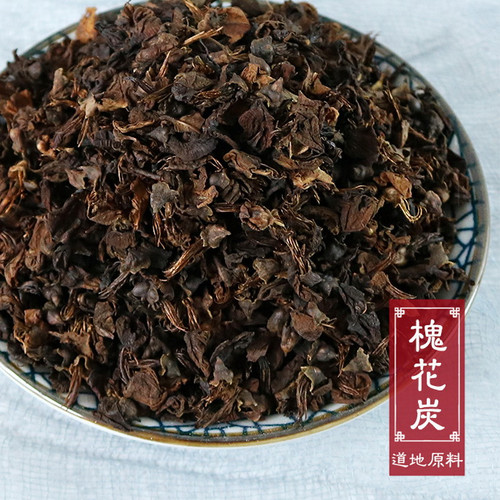Product Overview
Parts used: Dried flower bud
TCM category: Herbs that relieve coughing and wheezing
TCM nature: Warm
TCM taste(s): Bitter Pungent
Meridian affinity: Lung
Scientific name: Tussilago farfara
Use of coltsfoot flowers (Kuan Dong Hua) in TCM
Please note that you should never self-prescribe TCM ingredients. A TCM ingredient is almost never eaten on its own but as part of a formula containing several ingredients that act together. Please consult a professional TCM practitionner, they will be best able to guide you.
Preparation: Dig out the flower and do not touch it or wash it with water to avoid discoloration. Put it in a dry and ventilated place. When it is half dried, remove the soil, extract the stem and flower and dry it until it is completely dry.
Dosage: 3 - 9 grams
Main actions according to TCM*: Redirects Rebellious Lung Qi and stops coughing. Some coltsfoot plants contain toxic pyrrolizidine alkaloids which can cause liver problems.
Primary conditions or symptoms for which coltsfoot flowers may be prescribed by TCM doctors*: Coughing Dry cough Whooping cough Sputum Dyspnea Bloody sputum
Contraindications*: This herb should not be used for conditions that are of a Hot nature.
Common TCM formulas in which coltsfoot flowers are used*:
For asthma or chronic bronchitis combine coltsfoot flowers with ginkgo nuts (Bai Guo), ephedra (Ma Huang), perilla seeds (Zi Su Zi), apricot seeds (Xing Ren), mulberry bark (Sang Bai Pi), baikal skullcap roots (Huang Qin), crow-dipper rhizomes (Ban Xia) and liquorice (Gan Cao).
For phlegm obstruction with coughing, wheezing combine coltsfoot flowers with apricot seeds (Xing Ren).
For fluid accumulation with cough, wheezing combine coltsfoot flowers with schisandra berries (Wu Wei Zi) and crow-dipper rhizomes (Ban Xia).
For Yin deficiency with dry cough and bloody sputum combine coltsfoot flowers with lily bulbs (Bai He).
Key TCM concepts behind coltsfoot flowers (Kuan Dong Hua)'s properties
In Traditional Chinese Medicine (TCM), coltsfoot flowers are plants that belong to the 'Herbs that relieve coughing and wheezing' category. In TCM Phlegm is a condition of Stagnation of Fluids which tends to start in the Spleen and then goes to the Lungs. If this overly accumulates it thickens and becomes pathological Phlegm. Phlegm, being a form of Stagnation, often starts as being Cool and transforms to Hot as the condition progresses. Herbs that relieve coughing and wheezing treat branch symptoms of this Stagnation and tend to have antitussive, expectorant, diuretic or laxative properties.
Furthermore coltsfoot flowers are plants that are Warm in nature. This means that coltsfoot flowers tend to help people who have too much "cold" in their body, although with less effect than a plant that would be Hot in nature. Balance between Yin and Yang is a key health concept in TCM. Those who have too much cold in their body are said to either have a Yin excess (because Yin is Cold in nature) or a Yang deficiency (Yang is Hot in Nature). Depending on your condition coltsfoot flowers can help restore a harmonious balance between Yin and Yang.
Coltsfoot flowers also taste Bitter and Pungent. The so-called "five elements" theory in Chinese Medicine states that the taste of TCM ingredients is a key determinant of their action in the body. Bitter ingredients like coltsfoot flowers tend to have a cleansing action on the body by clearing heat, drying dampness and promoting elimination via urination or bowel movements. On the other hand Pungent ingredients tend to promote the circulations of Qi and body fluids. That's why for instance someone tends to sweat a lot when they eat spicy/pungent food.
The tastes of ingredients in TCM also determine what organs and meridians they target. As such coltsfoot flowers are thought to target the Lung. In addition to performing respiration, the Lungs are thought in TCM to be a key part of the production chain for Qi and the body fluids that nourish the body.








